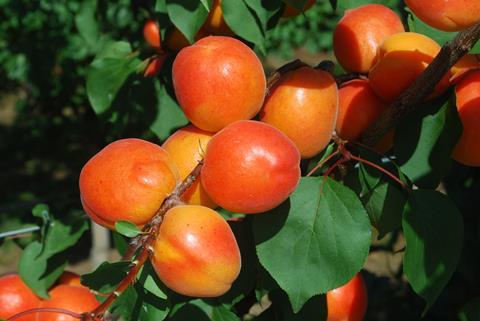Innovation in production and processing, water-saving precision technology, economically sustainable new varieties: just some of the ways in which European fruit and vegetables can meet new climate and geopolitical challenges

New varieties resistant to plant diseases and climate change. Investment in scientific research; the installation of photovoltaic systems to produce green energy; innovative micro-irrigation systems; and increasingly accurate sensors; futuristic tools for field selection and fruit harvesting: the production of fruits and vegetables in Europe is increasingly green, innovative and sustainable.
This is also a clear response to requests from ever more demanding and informed consumers. In&Out, a promotional campaign managed by Italian group Apo Conerpo and co-financed by the European Community, gives consumers information about the quality, wholesomeness and sustainability of European produce. It also enables them to discover and appreciate the role that grower organisations like Apo Conerpo play at a community level and the daily challenges for those committed to ensuring that fresh, wholesome, safe and environmentally friendly products arrive on people’s tables.
“In recent years, we have invested significant resources in terms of innovation in the field and processing structures,” explains Davide Vernocchi, president of Apo Conerpo, “responding to the challenges posed for us by society, the climate and the general geopolitical scenario.”
Vernocchi is thinking, for example, about the issue of water scarcity. “Far from being guilty of wasting water,” he argues, “for years; fruit and vegetable production has been very focused on tackling this issue. The agronomic techniques that we have adopted for some years now help us to manage and not waste our precious water resources, in the best possible way.”
Technology also plays a big role. “By bringing technology into our orchards, we can make production processes more efficient, and at the same time guarantee savings, not only in water resources, but also energy,” Vernocchi continues.
“I’m thinking, for example, of the hoses installed next to more than 90 per cent of our associates’ tomato crops, micro-irrigation or precision irrigation where water is distributed only in the quantity needed. Or the thousands of sensors installed in the soil up to 60cm deep at a short distance from each other, which, with a phone application, transmit to the farmer in real time a precise and timely analysis of the soil situation, allowing him to irrigate only where and when it is necessary.”
Technology in the field also helps to deal with the problem of labour shortages, a serious threat to the economic sustainability of fruit and vegetable growers. “Starting in these summer months in the countryside,” Vernocchi explains, “we will all experiment with a very innovative start-up, new equipment for mechanical harvesting. I am talking about drones equipped to identify the right degree of ripeness in the fruits and then harvest them one at a time. This project will soon be launched in this area as well with the University of Bologna.”
Chain reaction
Innovation also plays a key role beyond the field. “In the warehouses of our cooperatives, increasingly widespread use is made of cutting-edge calibrators and sorters,” Vernocchi notes, “which, thanks to artificial intelligence, are becoming faster and more accurate every day, even analysing the inside of the fruits, increasing efficiency, optimising energy resources and maximising the relationship between costs and results.”
On the energy front, more and more facilities have been equipped with green energy production systems. “I’m mainly thinking of solar panels: just think that, recently, our associate Agrintesa has enhanced its ability to produce energy from the sun with a system capable of generating over 2.5MW, equal to what about 1,000 families would consume.”

Much has also been done on the varietal innovation front. “Take, for example, that symbolic summer fruit, the apricot,” Vernocchi continues. “In these last few years, we have worked on new varieties that are closer to consumer tastes, developing fruits with extreme red colouring, good sweet flavour, and a very dense pulp. Moreover, the varietal research has allowed us to significantly expand the marketing window: in fact, the production area has been extended to both the crops in the plains, as well as in the hills, thanks to some new varieties that adapt better to the different pedoclimatic conditions.”
That diversification process also helps to defend crops from the effects of late frost. With different varieties that flourish at different times, this reduces the risk of seeing production swept away in one fell swoop and compromising the farms’ survival.
“All of these initiatives share a common objective,” Vernocchi concludes. “To make our fruit and vegetable sector ever more resilient in the face of climate change, the energy crisis and the challenges posed by the complex national geopolitical situation.”



